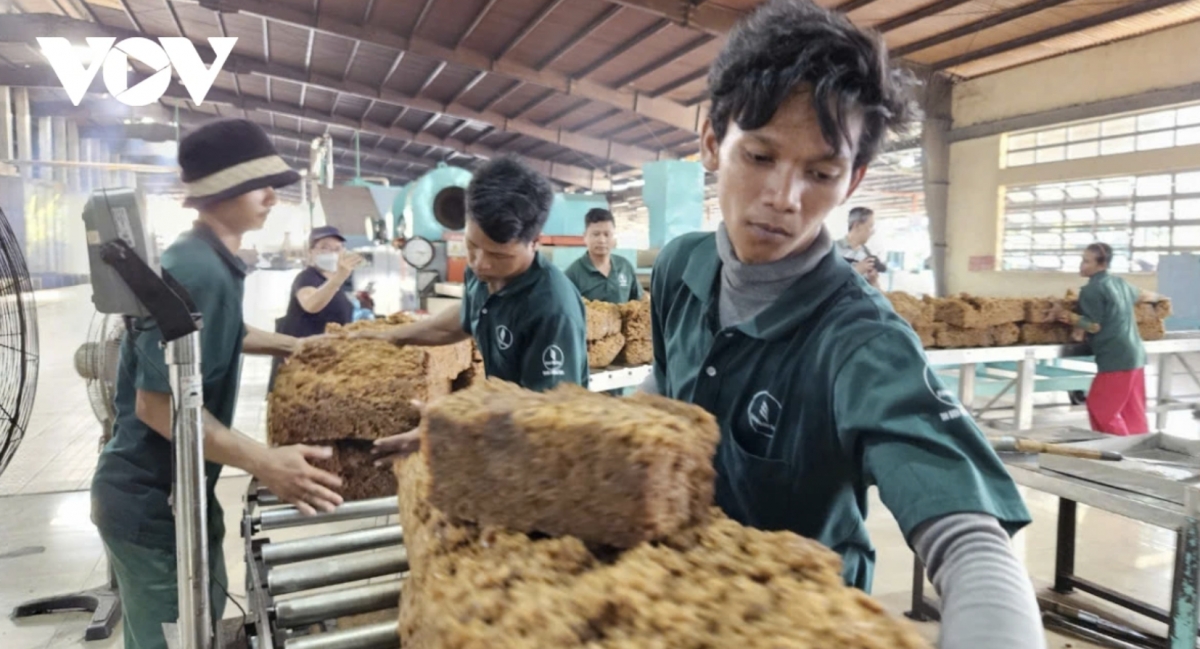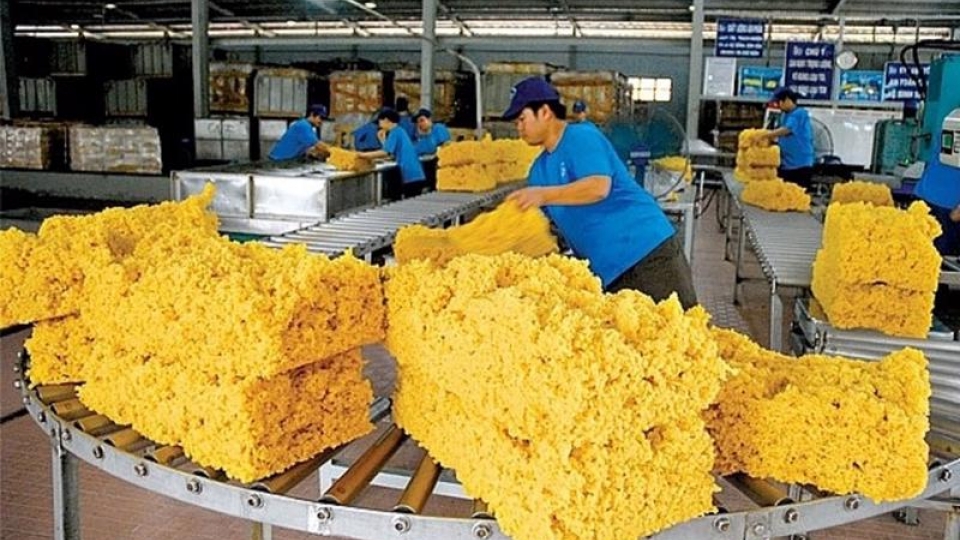Rubber industry targets export growth over global supply shortage
VOV.VN - Vietnam that exports rubber to approximately 80 countries and territories worldwide is poised to capitalise on a global rubber shortage, with the Vietnam Rubber Association (VRA) forecasting significant growth in both export volume and value throughout 2025.
Capitalising on global supply shortage
As international demand outpaces supply, rising rubber prices are creating a favourable environment for Vietnamese exporters, says VRA.
VRA statistics show in the first four months of 2025, Vietnam exported more than 415,000 tonnes of rubber, up 31% year-on-year. The country’s largest markets remain in Asia, with China, India, Malaysia, Indonesia, and the Republic of Korea among the top importers.
The VRA projects that total rubber industry export turnover could exceed US$11 billion this year, including US$3.5 billion from natural rubber alone.
The Association of Natural Rubber Producing Countries (ANRPC) has reported a global natural rubber shortfall of nearly 1.2 million tonnes. This is partly due to reduced output in major exporting countries such as Thailand and Indonesia, where prolonged heavy rainfall, plant diseases, and shrinking cultivation areas have hindered production. Given ongoing climate and geopolitical uncertainties, the supply crunch is expected to persist.
Ample room for rubber exports ahead
Vietnam’s natural rubber output is on the rise, setting the stage for continued export momentum. Among emerging opportunities, the United States stands out as a significant potential market. According to the US International Trade Commission (USITC), the country’s rubber imports were two million tonnes lower than average last year. With increased tariffs on car imports, growing domestic auto production, and a push to diversify sourcing, US demand for rubber is expected to rise.
Vietnam exported over 29,000 tonnes of rubber to the US in 2024, increasing its market share to 1.7%. While modest, this growth signals potential for expansion, particularly as the US economy stabilises and interest rates decline.
Meanwhile, in Europe, the EU’s Deforestation Regulation (EUDR) poses a challenge but also an opportunity for Vietnamese exporters. Businesses that hold forest sustainability certifications such as PEFC or VFCS are likely to gain a competitive edge in this high-value market.
Le Thanh Hung, chairman of the VRA, predicts that this year will see continued geopolitical shifts, various impacts from climate change, and a green development push.
Inflation, supply chain adjustments, and carbon reduction pressures will all impact the rubber industry, especially given its links to automotive manufacturing, construction, and consumer goods.
Natural rubber prices are forecast to rise between 5% and 10% compared to 2024 levels. This price increase presents a window of opportunity for Vietnamese firms to transform challenges into growth by focusing on sustainability, innovation, and market expansion.
In support of the industry, the VRA plans to intensify trade promotion, facilitate access to government support, and advocate for policies tailored to industry-specific needs. It also aims to strengthen business connectivity and help companies diversify their customer base, ensuring long-term competitiveness in a changing global market.





